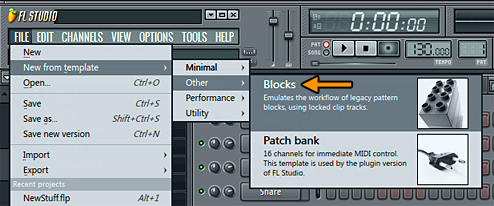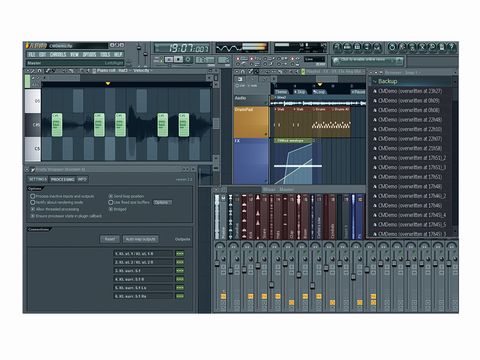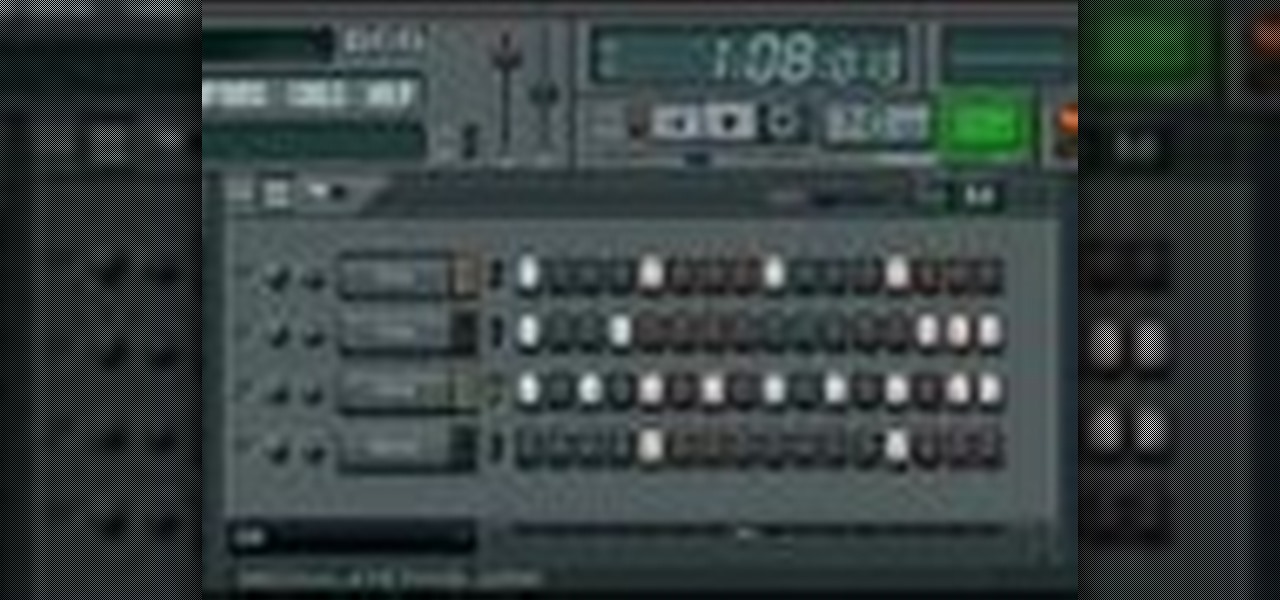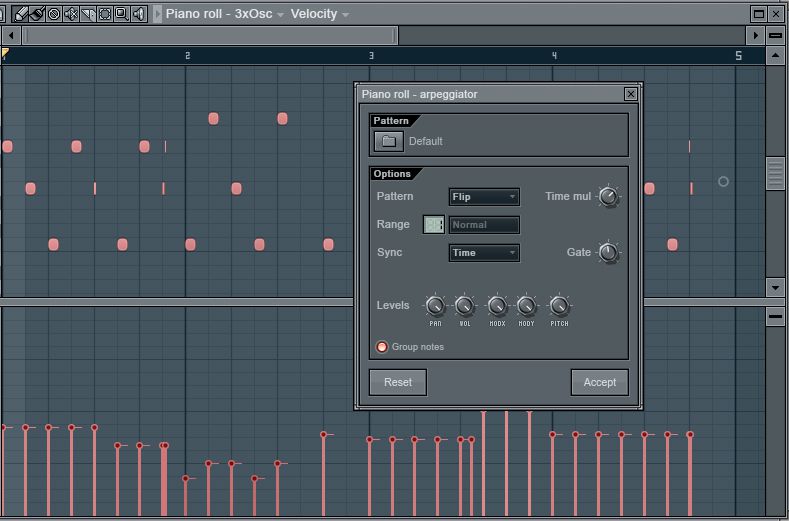That said, 9.6 does provide the option to revert back to pattern blocks by activating the ‘enable legacy pattern blocks' found under the ‘General Settings' tab. However, by the time FL Studio hits version 10, pattern blocks will be obsolete and the option to revert to legacy patterns will also be removed. Apr 26, 2013 Reason doesn't have blocks, it has something totally different that happens to be named blocks (which FL doesn't need since a single pattern clip can hold a full song). We have never called them blocks btw, users did. In FL they were 'pattern instances'. Lets say I have a melody throughout the playlist that is in 4 bar pattern increments. Isn't there a way to merge them into each other to make them one big pattern? I know I've seen this done in a tutorial video before, but I can't find it! The best FL Studio resource on the internet! Created Feb 15, 2010. Blocks of Love Pattern Only. Irish Blessings Quilt Pattern Only. Stained Glass Frame Pattern ONLY. My Retreat Quilt.
- New Pattern Fl Studio
- Create New Pattern Fl Studio
- Combine Patterns Fl Studio
- Fl Studio Pattern Length
- Fl Studio Pattern Blocks For Sale
- Fl Studio 11 Pattern Blocks
- ›
- Making Your Personal Pattern Block
You're ready to make your pattern block!
Using the final fitted muslin, you'll transfer all of your corrections to paper, and then make a cardstock basic block pattern that you'll use again and again to create your new designs. And they'll fit! Hooray!
By now you have assembled your fitting muslin and fit it on yourself or on your body form.
New Pattern Fl Studio
This is my fitting pattern muslin. Overall, it fits the form pretty well.
Take another look to see if anything is still tight, droopy, or uneven. This is your last chance to fix it, so you'll never have to fix it again.

What I found on my dress, unfortunately, is that the side seams on the bodice and skirt did not line up properly, and overall the seam was was not straight.

The red lines indicate the seams as sewn on the final version of the dress. The black line is the corrected seam line. I will make these corrections as I transfer the markings to the paper pattern.
First, take the muslin dress apart along the stitch lines (make sure all stitching lines are clearly marked before taking the dress apart).
Then, trim the pieces along the FINAL, corrected seam lines/dart lines. There should be NO seam allowance on these pieces.
On the sleeve cap, I did not cut the sleeve along the alteration line; I will make that adjustment to the paper pattern.
On the back, I pinned the bodice to shorten it; again, I will make the same folded adjustment to the paper pattern.
After trimming the muslin pieces, lay the muslin piece over the corresponding paper pattern and transfer all seam lines, darts, and other markings made during the fittings. Then trim the paper pattern, as you did the muslin pieces.
The photo at right shows the back bodice laid over the paper pattern (use a ruler to draw straight lines onto the paper pattern). The front bodice (on the left) has already been trimmed.
On the sleeve cap, I measured the distance between the marked lines where I pinched out the excess fullness.
I then removed the same amount (about 1/2') from the top of the sleeve cap on the paper pattern.
If you drafted your block from measurements instead of using a commercial fitting pattern, the process is the same. Use your muslin to transfer your fit adjustments to your paper (drafted) pattern before proceeding to the cardstock tracing.
Before transferring the paper pattern to cardstock to make the pattern block, check that all the pieces fit together.
Tape any darts closed where they meet the seams you are checking. Here, I have taped the side bust dart closed to check the side seams. The waist darts can remain open at this point.
Lining up the front and back bodice at the side seam, I see that the sides are uneven at the waist. I'll add a piece of paper to the front bodice to correct the problem.
Using the same process, I've taped together the waist darts on the bodice and skirt patterns (releasing the bust dart so the pieces lay as flat as possible).
On the front, the bodice and skirt do not match at the waist. This is a reflection of the problem we saw when the final dress was on the form.
I need to add to the bodice side, mostly at the waist, and tapering to nothing at the armhole.To do this, I simply tape a piece of paper to the pattern and re-draw the line.
The black line on the dress photo, near the top of this page, indicates that the side seam of the bodice needed to be moved back. This is the resulting pattern correction.
Once you've checked all of your pieces to make sure that the seams match and everything fits together, you can transfer the tissue pattern to cardstock for your re-useable pattern block.
Plain white (or light-colored) cardstock is available at craft stores, or the craft section of your sewing center.
Lay the tissue pattern on the cardstock and carefully trace it onto the cardstock. Use a ruler for straight lines and carefully draw curves free-hand (or use a curved ruler, if you'd like).

Do NOT add seam allowances. It is easier to add style lines when you design a new style when there are no seam allowances on the basic block. You'll add seam allowances to your final sewing pattern.
After tracing the tissue pattern onto cardstock, transfer all markings - dart lines, grain lines, notches, dots for marking ease placement, etc.
Also mark center front (CF) and center back (CB) on the bodice and skirt, and the shoulder point on the sleeve cap.
Finally, write the name of the pieced (such as 'Bodice Back'), and any other information you think you will need as you work with the pattern.
I like to add the date (bodies change over time!), and sometimes other notes (such as 'no seam allowance', just to remind me when I'm using the block!).
Create New Pattern Fl Studio
Finally, cut out the pattern piece, cutting out the darts as well as along the stitch lines. It is much easier to trace the pattern and place the darts when they are cut out of the pattern block.
Now the fun begins - you can design almost anything you want, and use the block pattern to create a sewing pattern for that style.
But first - there's one more block you might want to make.

Personally, I seldom wear anything as fitted as the fitting dress (especially the bodice). So, for convenience in making blouses and tops, you can use your block pattern to make a torso or blouse/top block. It's essentially your introduction to using your block and manipulating it to make a new pattern.
Ready to start?Let's make a blouse block!
- A Beginner's Guide to Drafting a Dress Block
- Full Bust Adjustment
- Fitting the Pants - Final Fitting
- A Beginner's Guide to Drafting a Pant Block
- The Importance of Sewing Darts
- Pattern Grading
Need More Help with Fitting Issues?
The examples on this site reflect MY fitting issues and how I resolved them. YOUR body is likely very different.
But, since this is a site about MAKING patterns and not specifically about fitting, I'm not going to address other fit issues here. And believe me, there are others who can address this issue better than me.
Any of the books listed below will help you achieve good fit. You can use the techniques on any pattern; but why make the same corrections over an over again? Apply the principles to your block, and the fit corrections YOU need will be automatically built in to every pattern you make!

What I found on my dress, unfortunately, is that the side seams on the bodice and skirt did not line up properly, and overall the seam was was not straight.
The red lines indicate the seams as sewn on the final version of the dress. The black line is the corrected seam line. I will make these corrections as I transfer the markings to the paper pattern.
First, take the muslin dress apart along the stitch lines (make sure all stitching lines are clearly marked before taking the dress apart).
Then, trim the pieces along the FINAL, corrected seam lines/dart lines. There should be NO seam allowance on these pieces.
On the sleeve cap, I did not cut the sleeve along the alteration line; I will make that adjustment to the paper pattern.
On the back, I pinned the bodice to shorten it; again, I will make the same folded adjustment to the paper pattern.
After trimming the muslin pieces, lay the muslin piece over the corresponding paper pattern and transfer all seam lines, darts, and other markings made during the fittings. Then trim the paper pattern, as you did the muslin pieces.
The photo at right shows the back bodice laid over the paper pattern (use a ruler to draw straight lines onto the paper pattern). The front bodice (on the left) has already been trimmed.
On the sleeve cap, I measured the distance between the marked lines where I pinched out the excess fullness.
I then removed the same amount (about 1/2') from the top of the sleeve cap on the paper pattern.
If you drafted your block from measurements instead of using a commercial fitting pattern, the process is the same. Use your muslin to transfer your fit adjustments to your paper (drafted) pattern before proceeding to the cardstock tracing.
Before transferring the paper pattern to cardstock to make the pattern block, check that all the pieces fit together.
Tape any darts closed where they meet the seams you are checking. Here, I have taped the side bust dart closed to check the side seams. The waist darts can remain open at this point.
Lining up the front and back bodice at the side seam, I see that the sides are uneven at the waist. I'll add a piece of paper to the front bodice to correct the problem.
Using the same process, I've taped together the waist darts on the bodice and skirt patterns (releasing the bust dart so the pieces lay as flat as possible).
On the front, the bodice and skirt do not match at the waist. This is a reflection of the problem we saw when the final dress was on the form.
I need to add to the bodice side, mostly at the waist, and tapering to nothing at the armhole.To do this, I simply tape a piece of paper to the pattern and re-draw the line.
The black line on the dress photo, near the top of this page, indicates that the side seam of the bodice needed to be moved back. This is the resulting pattern correction.
Once you've checked all of your pieces to make sure that the seams match and everything fits together, you can transfer the tissue pattern to cardstock for your re-useable pattern block.
Plain white (or light-colored) cardstock is available at craft stores, or the craft section of your sewing center.
Lay the tissue pattern on the cardstock and carefully trace it onto the cardstock. Use a ruler for straight lines and carefully draw curves free-hand (or use a curved ruler, if you'd like).
Do NOT add seam allowances. It is easier to add style lines when you design a new style when there are no seam allowances on the basic block. You'll add seam allowances to your final sewing pattern.
After tracing the tissue pattern onto cardstock, transfer all markings - dart lines, grain lines, notches, dots for marking ease placement, etc.
Also mark center front (CF) and center back (CB) on the bodice and skirt, and the shoulder point on the sleeve cap.
Finally, write the name of the pieced (such as 'Bodice Back'), and any other information you think you will need as you work with the pattern.
I like to add the date (bodies change over time!), and sometimes other notes (such as 'no seam allowance', just to remind me when I'm using the block!).
Create New Pattern Fl Studio
Finally, cut out the pattern piece, cutting out the darts as well as along the stitch lines. It is much easier to trace the pattern and place the darts when they are cut out of the pattern block.
Now the fun begins - you can design almost anything you want, and use the block pattern to create a sewing pattern for that style.
But first - there's one more block you might want to make.
Personally, I seldom wear anything as fitted as the fitting dress (especially the bodice). So, for convenience in making blouses and tops, you can use your block pattern to make a torso or blouse/top block. It's essentially your introduction to using your block and manipulating it to make a new pattern.
Ready to start?Let's make a blouse block!
- A Beginner's Guide to Drafting a Dress Block
- Full Bust Adjustment
- Fitting the Pants - Final Fitting
- A Beginner's Guide to Drafting a Pant Block
- The Importance of Sewing Darts
- Pattern Grading
Need More Help with Fitting Issues?
The examples on this site reflect MY fitting issues and how I resolved them. YOUR body is likely very different.
But, since this is a site about MAKING patterns and not specifically about fitting, I'm not going to address other fit issues here. And believe me, there are others who can address this issue better than me.
Any of the books listed below will help you achieve good fit. You can use the techniques on any pattern; but why make the same corrections over an over again? Apply the principles to your block, and the fit corrections YOU need will be automatically built in to every pattern you make!
Combine Patterns Fl Studio
I can recommend any of the following books to help you achieve good fit, no matter what your size or shape. I own or have used almost all of the books on this list, and have been pleased with how they address fit problems.
Click on the images, below, to go to the item in Amazon. As an Amazon Associate I earn from qualifying purchases. This helps to keep this site free for your use. You are free to search Amazon for these or other similar items without using the affiliate links on this page.
• Pattern Fitting With Confidence- Written by the late Nancy Zieman, host of the TV series 'Sewing with Nancy'. She provides a straightforward, down-to-earth approach to sewing and fitting. Very user-friendly.
• The Complete Photo Guide to Perfect Fitting- I love this book!!! So wonderfully illustrated with photos, using commercial patterns to demonstrate the pattern alterations. It addresses almost any fit problem you might have. So easy to understand and follow!
• Sewing for Plus Sizes - Creating Clothes that Fit and Flatter - A great book for Plus sizes! As a woman gets larger, it's not just the measurements that change - our overall proportions shift, too. This book addresses the different body types and proportions you commonly see in larger women. Truly helpful for larger women.
Return to Clothing Patterns 101 Home Page
Fl Studio Pattern Length
Noah is four. For a four year old he is pretty good at playing independently for fairly long periods of time, but sometimes he needs a little encouragement to get started.
Sometimes, when I really need to get some work done and he just can't settle into playing with any of the toys we have on offer, I'll set him up an'invitation to play'.
These invitations are always fairly simple, and they are always activities that he can manage without much supervision or input from me.
These activities won't keep him engaged for hours, but they are enough to get him started with independent play and he seems to be able to pick up and run with his own ideas, once he is done with the activity I have set up.
Earlier this week I set up a very similar invitation to play with pattern blocks.
Fl Studio Pattern Blocks For Sale
We got this set of pattern blocks many many Christmases ago and they are always popular. They turn up in our loose parts play, like when we made these crazy faces, and in imaginative play, and construction play, but they are just as fun on their own, especially with a few free printable pattern cards.
Fl Studio 11 Pattern Blocks
On this occasion I set out the pattern blocks and some printed letter pattern cards – one for each letter of Noah's name, as he is working hard on writing his name correctly at the moment.
Nuvoton cir transceiver windows 10. Nuvoton Cir Transceiver now has a special edition for these Windows versions: Windows 7, Windows 7 64 bit, Windows 7 32 bit, Windows 10, Windows 10 64 bit, Windows 10 32 bit, Windows 8,Windows RT 64bit, Windows Vista Home Premium 64bit, Windows 10 Pro 32bit, Windows 10 Team 64bit, Windows 7 Starter 32bit, Windows 7 Service Pack 1 (Microsoft Windows NT) 32bit, Windows 8 Enterprise 64bit, Windows 10 Mobile 64bit, Windows Vista Starter 32bit, Windows 10 Mobile Enterprise 64bit, Windows XP Home Edition, for home desktops and laptops 32bit.
Pattern blocks come in standard colours, shapes and sizes and they are either wooden or plastic. If you don't have a set of pattern blocks there are lots of options to print your own pattern blocks here.
Free Printable Pattern Block Cards
Kubota gh170 parts manual. Free Alphabet Pattern Block Printables from Confessions of a Homeschooler (also in black and white)
Free 1-20 Pattern Block Cards from Confessions of a Homeschooler (also in black and white)
Transportation Pattern Block Mats from PreKinders
Animal Pattern Block Mats from PreKinders
Preschool Pattern Block Activity Cards from Confessions of a Homeschooler.
Jessica's Pattern Block Shapes
Snowflake Pattern Block Mats from PreKinders.
Making Patterns with Pattern Blocks – free printable from Moms Have Questions Too
Pattern Block Printables from Mama's Learning Corner
Bug Pattern Block printables from PreKinders
Pattern Block Ideas and Activities
Exploring Shapes and Patterns from An Every Day Story
Giant Pattern Block Scenes from Mama Smiles
Play dough and Pattern Blocks from Mama Smiles
Suduko with pattern blocks – free printables from Kid Giddy.
Using Pattern Blocks for Learning Symmetry from Teaching Tales Along the Yellow Brick Road
Maths Sorting with Pattern Blocks – a free resource at Teachers Pay Teachers by Tiffani Mugurussa.
Math Toybox – a free online pattern block game.
Printing with pattern blocks from The Preschoool Toolbox Blog
How to DIY your own pattern block cards from Preschool Inspirations
Make giant felt pattern blocks from The Educators Spin on It.
Do you have pattern blocks?
What is your favourite way to play with them?
Below are some affiliate options for buying pattern blocks on Amazon. If you buy through one of these links I get a small commission at no extra cost to you.
